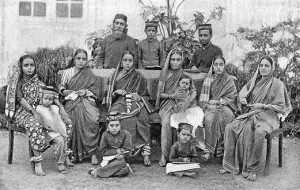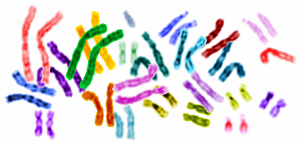History and Genetics: Mesopotamia to Canaan
Part III
Among the earliest population movements in Jewish history would certainly be the migration of the extended family of Abraham from ancient Sumer up to Assyria and then to Canaan. This migration is typical of the voluntary movement of small groups that would later be part of the spread of the Jewish population. This is the case even if this population with occurred within the context of wider movement set off by the destruction of Ur in the 19th century BCE. While much recent scholarship has sought to deny the Mesopotamia origins of the Israelite people, we have argued that the clear Mesopotamian origins of elements of the biblical narrative, such as the flood story and the Tower of Babel, and of some legal material, can only be explained in light of Mesopotamia origins. Genetic evidence does indicate closeness, within the Semitic area, to the Iraqi population, which seems further reason to accept Mesopotamia origins.
Similarly, the biblical narrative describing the Exodus and the conquest of Canaan has also been challenged by recent scholarship. In this case, we would be dealing with a mass immigration… Continue reading
History and Genetics: Commonality of origin
Part II
The issue of the common origin of the Jews has been greatly illuminated by genetic study. Jews from the ancient Land of Israel were dispersed into the wider Diaspora communities, through a whole series of events including emigration, exile and long-term business travel that resulted in the founding of far-flung Jewish communities. Genetic evidence has tended to provide a number of indications of elements common to the main population groups of the Jewish people, Ashkenazim, Sephardim (by which we refer to the Spanish Portuguese Jews and their descendents) and Middle Eastern Jews. The method of coalescence has been used to determine that the particular mutations causing certain diseases occurred some 2000 years ago, when the main body of the Jewish population was still in the Land of Israel. This is the case with Familial Mediterranean fever and with the BRCA1 and 2 genes that give rise to breast and ovarian cancer. One of these mutations has been found among Jews from all over the world, including Bene Israel and some Hispanics who may be descendents of Conversos. Again, such features indicate the common genetic origin of the Jews. All… Continue reading
History and Genetics: Can the History of the Jews Actually be Observed in their Genomes
Part I
The purpose of this study is to relate the substantial discoveries made in the study of the genetics of the Jewish people with the substantial progress made in the study of their history in modern times. While the study of Jewish genetics is a relatively new field, Jewish history continues to progress due to new data becoming available and also new perspectives and methodologies. Actually, the study of the genome is fast becoming one of those new methodologies as the boundaries between what were very distant fields appear to be eroding. Indeed, our purpose here is to hasten this process by attempting to test the results of genetic studies against various models of demographic development.
We will present the material largely according to a geographic classification. However, before beginning, we need to make clear that there are a variety of models of Jewish population movement that contribute to the overall spread of Jewish population throughout the world. Since we will encounter a number of these in our discussion, it would be worth surveying the possible forms for the establishment of communities that underlie the discussion that follows. At the… Continue reading



